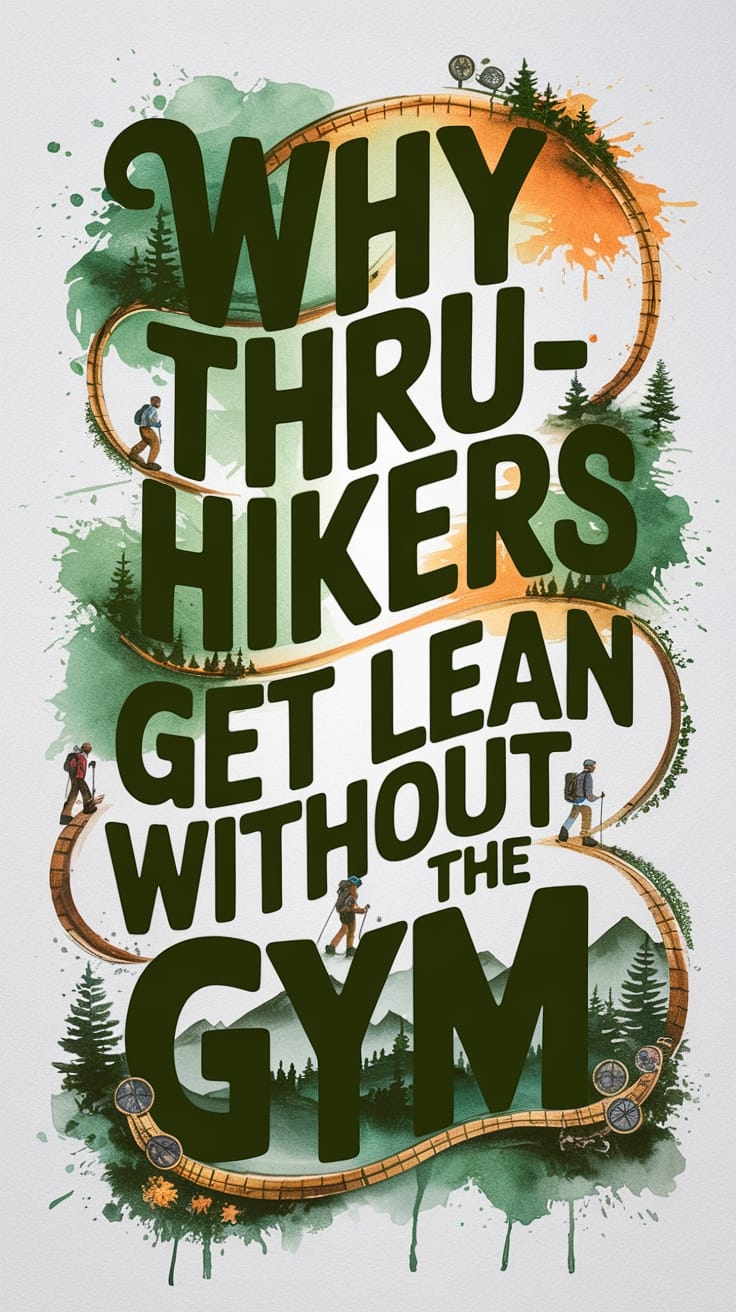Hiking isn't only a scenic adventure—it's a powerful fat-burning workout that'll transform your body fast. You'll torch up to 550 calories per hour by strategically maneuvering through trails with varied terrain and grades, engaging multiple muscle groups like glutes, hamstrings, and core.
By incorporating trail based training like carrying your backpack full of thruhiking gear, and mixing steep inclines with controlled descents and flats, you'll supercharge your metabolism and melt off body fat more efficiently than traditional gym workouts.
The low-impact nature of simply walking means you can sustain longer sessions, while natural obstacles and elevation changes continuously challenge your body. Want to access the full potential of trail-based fat loss? The next steps will reveal game-changing hiking strategies that'll innovate your fitness journey.
Long-Distance Trail Metabolics: The Thru-Hiker's Edge

While burning fat might seem challenging, hiking offers a surprisingly effective solution. When you hit the trails, you'll tap into a powerful fat-burning mechanism that transforms your body with every step.
By maintaining a heart rate between 70-80% of your maximum, you'll activate the oxidative system, which efficiently burns fat throughout low to moderate-intensity exercise.
Your body becomes a calorie-torching machine, burning approximately 430-550 calories per hour on moderate terrain, while engaging multiple muscle groups.
The magic happens when you utilize climbs and descents, incorporating in hiking moves like lunges, squats, and trekking poles to increase intensity.
Unlike high-intensity workouts, hiking allows for longer sessions, promoting sustained fat loss and providing a low-impact, enjoyable path to transforming your physique. Hiking's weight-bearing nature also stimulates bone-forming cells, enhancing overall metabolic performance and long-term health benefits. Additionally, diverse terrain challenges can increase muscle engagement and metabolic rate, further accelerating the body's fat-burning potential.
High-Mileage Impact: Grade vs. Energy Output

Though many hikers overlook trail grade, it's a critical factor in maximizing calorie burn during outdoor workouts. The steepness of your path dramatically influences energy expenditure, with higher grades burning notably more calories per hour.
Uphill walking mechanics inherently require more muscular engagement and metabolic effort, creating a more intense workout compared to flat terrain.
Moreover, metabolic elevation occurs when hikers consistently challenge themselves with varied terrain and increasing trail difficulty.
Trail-Hardened: Key Muscle Groups for Thru-Hiking

Hiking transforms 5 essential muscle groups that turn your outdoor adventure into a full-body fitness experience.
Your glutes—including gluteus maximus, medius, and minimus—will fire up in uphill climbs, extending hips and generating powerful forward momentum.
Hamstrings collaborate with glutes to propel you across challenging terrain, while quadriceps provide critical leg strength for each strategic step.
Calves contribute significant propulsive power, especially in steep ascents, and your core muscles stabilize your body through dynamic scenery changes.
Progressive overload principles indicate that consistent hiking with increasing intensity can systematically enhance muscle development and metabolic adaptation. Cardiovascular endurance training also demonstrates that regular hiking progressively improves metabolic efficiency and overall fitness capacity.
Strategic Trail Progress: Thru-Hiker Training Methods

You'll transform your body by implementing interval training techniques, alternating between fast uphill sprints and controlled downhill paces that challenge multiple muscle groups simultaneously.
Choosing to incorporate bodyweight exercises like pushups, squats, and lunges throughout your trek can boost metabolic rates and build lean muscle without requiring additional gym equipment.
Enhance your hiking performance by selecting hilly routes, wearing a fully kitted out thruhiking backpack, and gradually increasing intensity over time.
Hydration plays a critical role in maintaining energy levels and supporting metabolic efficiency during long hiking sessions.
Gear like a Coros watch or Garmin fitness trackers can help you monitor progress and reduce joint strain while maximizing caloric expenditure.
Your trail strategy becomes an all-encompassing fitness approach that burns fat efficiently and builds total-body strength. By understanding terrain variation's muscle engagement, hikers can systematically challenge different muscle groups and optimize their fat-burning potential.
The Triple Crown Effect: Mental and Physical Transformation

While weight loss remains a primary motivation for many when they begin, hiking offers a transformative journey that extends far beyond physical transformation. Metabolic rate enhancement through consistent hiking can boost calorie burning potential by increasing muscle engagement and cardiovascular efficiency.
You'll discover a holistic wellness experience that nurtures not just your body, but your mental environment.
The cardiovascular benefits alone are remarkable, with hiking potentially lowering heart disease risks and improving blood pressure through engaging core muscles and challenging terrain.
Seniors especially benefit, experiencing reduced fatigue and enhanced cognitive focus. Muscle engagement during hiking activates multiple muscle groups simultaneously, creating a comprehensive full-body workout that burns calories more efficiently than traditional gym exercises.
Beyond metabolic changes, hiking provides a unique opportunity to reconnect with natural environments, offering stress relief and a sense of inner peace that transcends traditional exercise routines.
Resupply Strategy: Fueling Multi-Month Adventures

When you're preparing for a challenging trail, understanding nutrition's critical role can make the difference between an exhilarating journey and a grueling struggle.
Your body needs strategic fueling to conquer diverse terrains, as you will be burning up to 5,000+ calories daily while maneuvering through challenging environments.
Many will focus on a balanced macronutrient approach: consuming 30 to 60 grams of carbohydrates per hour maintains endurance, while mixing carbohydrates (30%) and fats (70%) provides sustained energy.
At higher altitudes, you'll need to increase calorie intake and prioritize hydration, drinking 3-5 liters of fluid daily and evaluating electrolyte-rich beverages to prevent muscle cramps and maintain peak performance on the trail.
Zero to Trail-Ready: Building Your Thru-Hiking Foundation

As successful bodyfat weight loss through hiking requires strategic planning, enhancing your hiking strategy becomes essential for achieving fitness goals. Your trail performance depends on carefully selecting terrain that maximizes muscle engagement and calorie expenditure. Reflect on these key optimization techniques:
- Choose routes with varied elevation, mixing flat paths and steep inclines.
- Incorporate hiking poles to distribute energy and reduce joint stress.
- Pack a weighted backpack to increase metabolic demand.
- Develop a consistent pace that maintains steady cardiovascular effort.
Implementing these strategies transforms ordinary hiking into a powerful fat-burning workout.







